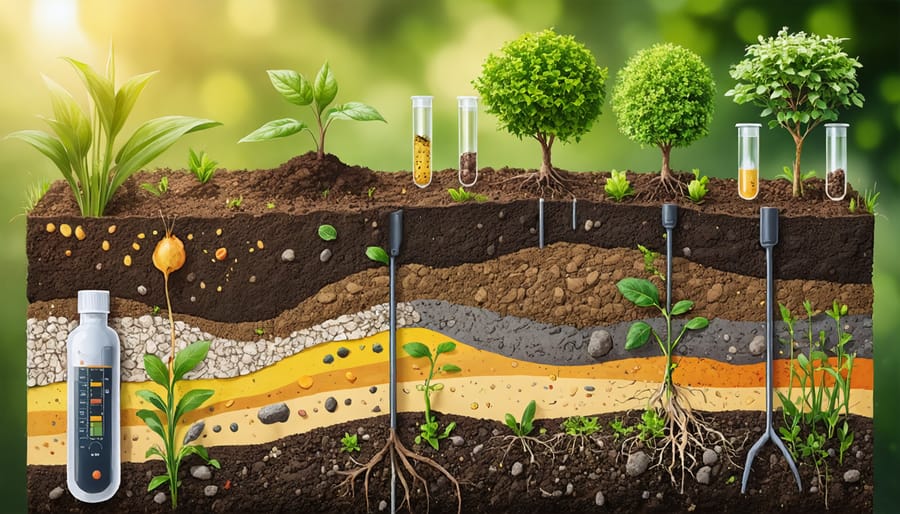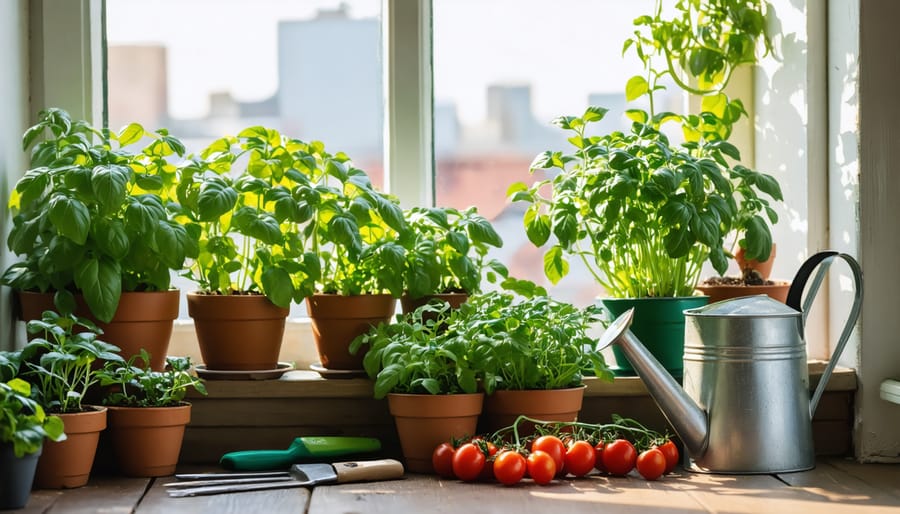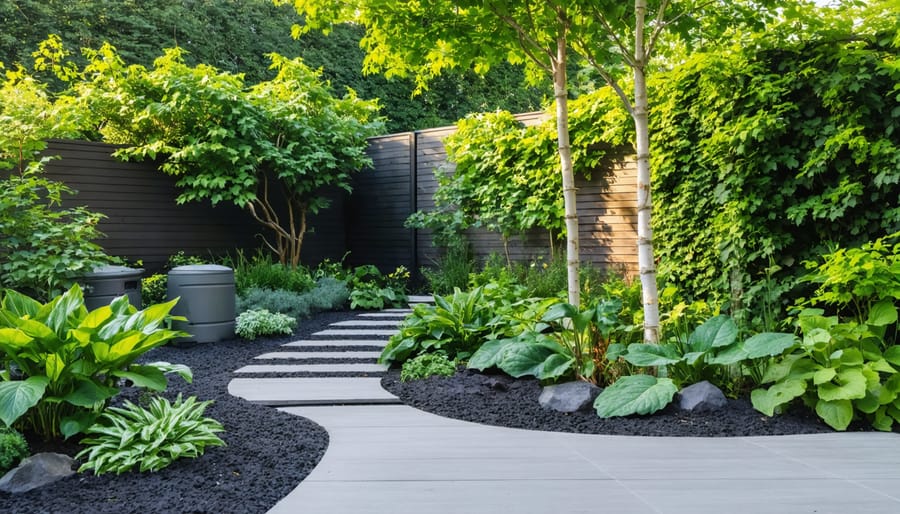Transform your garden in two-minute bursts with these rapid-fire techniques that deliver maximum impact. Prune dead leaves and stems while watering to instantly boost plant health and appearance. Harvest herbs and vegetables the moment they’re ready, combining maintenance with smart ways to save money on groceries. Scatter coffee grounds around acid-loving plants during your morning coffee routine, creating an instant nutrient boost that would otherwise cost premium fertilizer prices.
These micro-tasks fit seamlessly into busy schedules, proving that effective gardening doesn’t require hours of dedicated time. Whether you’re a seasoned gardener or just starting out, these bite-sized techniques deliver professional results without overwhelming commitment. Each tip takes just moments but compounds into significant garden improvements over time, making your outdoor space more beautiful and productive with minimal daily effort.

Kitchen Scraps to Garden Gold
Coffee Grounds Magic
Don’t toss those used coffee grounds! They’re a goldmine for your garden, especially if you grow acid-loving plants like azaleas, hydrangeas, or blueberries. Simply sprinkle a thin layer around your plants’ base – about a quarter-inch is perfect. The grounds slowly release nitrogen and other nutrients while improving soil structure. As a bonus, coffee grounds naturally repel common garden pests like slugs and snails. You can also add them to your compost pile, where they’ll help create rich, dark soil. Just remember to let them dry first to prevent mold, and use them sparingly as part of your overall soil amendment strategy. Your plants will thank you with vibrant growth, and you’ll feel great about reducing waste while nurturing your garden.
Eggshell Solutions
Don’t toss those eggshells! They’re garden gold in disguise. Crush cleaned eggshells and sprinkle them around your plants to deter slugs and snails – they hate crawling over the sharp edges. For tomatoes and peppers, drop a handful of crushed shells into planting holes to prevent blossom end rot. You can also add them to your compost bin for a calcium boost, or make a simple nutrient tea by steeping crushed shells in water overnight. For houseplants, mix finely ground shells into potting soil to slowly release calcium. Remember to rinse shells thoroughly before use, and store them in a covered container until needed. These simple tricks turn kitchen waste into valuable garden resources in just minutes.
DIY Tool Hacks
Plastic Container Tricks
Don’t toss those plastic containers just yet! They’re about to become your new favorite essential gardening tools. Transform empty yogurt cups, takeout containers, and plastic bottles into perfect seed starters by poking drainage holes in the bottom with a heated nail. Stack smaller containers inside larger ones to create self-watering systems – the top container holds your plants while the bottom catches excess water.
Cut the bottom off plastic milk jugs to create protective cloches for tender seedlings, shielding them from late frosts and hungry pests. For a clever water-catching solution, slice plastic bottles horizontally and place them around your plants with the cut side facing up. They’ll collect rainwater and morning dew, directing moisture right to the roots.
Remember to clean all containers thoroughly before use and replace them each season to prevent any bacterial growth. These simple tricks help reduce plastic waste while giving your garden a sustainable boost!
Newspaper Solutions
Don’t toss those old newspapers just yet! They’re garden gold for two fantastic uses. First, lay several sheets of newspaper directly on your garden soil to create an effective weed barrier. Wet the papers thoroughly and cover with mulch – weeds won’t stand a chance, and the paper will naturally decompose over time, enriching your soil.
For a clever money-saving trick, transform newspaper into biodegradable seedling pots. Simply fold a single sheet into a small container shape using the origami pot method, fill with potting soil, and you’re ready to start seeds. These paper pots can be planted directly into your garden when seedlings are ready, as the newspaper will break down naturally in the soil.
Both techniques are eco-friendly alternatives to plastic products and help reduce waste while nurturing your garden. Plus, newspaper is free or nearly free, making these solutions as budget-friendly as they are effective.
Water-Wise Shortcuts
Bottle Irrigation
Transform empty plastic bottles into efficient self-watering systems for your garden in just minutes! Simply clean a plastic bottle, punch small holes in the cap, and cut off the bottom. Bury the bottle cap-down next to your plants, leaving a few inches exposed. Fill with water, and you’ve created a slow-release irrigation system that delivers moisture directly to plant roots. For larger plants, use 2-liter bottles; for smaller ones, 500ml bottles work perfectly. This method not only saves water but also reduces watering frequency, making it ideal for busy gardeners or during hot spells. You can even paint the exposed portions of the bottles to make them more aesthetically pleasing and protect the plastic from UV damage. Best of all, you’re giving those plastic bottles a second life while keeping your plants perfectly hydrated.

Mulch Matters
Transform your garden waste into free mulch in minutes! Collect fallen leaves, grass clippings, and small twigs from your yard. Layer these materials around your plants, about 2-3 inches thick. For vegetable gardens, shredded newspaper makes an excellent mulch – just lay 3-4 sheets thick and dampen them to prevent blowing away. Pine needles are perfect for acid-loving plants, while wood chips from tree trimming services often come free for the asking. Remember to keep mulch a few inches away from plant stems to prevent rot. This quick mulching technique conserves water, suppresses weeds, and enriches your soil as materials break down naturally. Best of all, it costs nothing but a few minutes of your time!
Time-Saving Plant Choices
Want to maximize your garden’s impact while minimizing your time investment? Let’s explore some plant choices that practically take care of themselves. These garden champions are perfect for busy gardeners who want to implement low-maintenance gardening techniques without sacrificing beauty.
Herbs like rosemary, thyme, and sage are virtually indestructible once established. They thrive in well-draining soil and actually prefer being left alone – perfect for the hands-off gardener! Plus, they’ll provide fresh flavors for your kitchen year-round.
For stunning flowers that keep on giving, plant perennials like black-eyed susans, coneflowers, and daylilies. These hardy bloomers return year after year with minimal fuss. They’re drought-tolerant and naturally resist most pests, making them ideal for time-strapped gardeners.
Looking for edibles? Cherry tomatoes and bush beans are self-sufficient vegetables that produce abundantly with little intervention. Simply plant them in a sunny spot with good soil, and they’ll reward you with fresh produce throughout the season.
Ground covers like creeping thyme or sedum are excellent choices for filling spaces while preventing weeds. Once established, they create a living carpet that requires almost no maintenance beyond occasional trimming.
For shady areas, consider hostas and ferns. These shade-lovers are incredibly resilient and can thrive for years with just basic watering. Their lush foliage adds texture and interest to your garden without demanding constant attention.
Remember, choosing the right plants from the start is the secret to a thriving garden that doesn’t eat up your precious time.
With these simple two-minute garden tips, you’re now equipped to make the most of your garden without spending hours or breaking the bank. Remember, successful gardening isn’t about dedicating entire weekends to maintenance – it’s about making smart, efficient choices that add up over time. Whether it’s using coffee grounds as fertilizer, repurposing household items for plant markers, or maximizing your watering schedule, each small action contributes to a thriving garden.
Start by implementing just one or two of these tips this week. You’ll be amazed at how these quick interventions can transform your garden care routine. The beauty of these time-saving techniques is that they work for any garden size and skill level, proving that everyone can be a successful gardener with the right approach.
Don’t feel pressured to apply everything at once. Garden care is a journey, not a race. As you incorporate these practices into your routine, you’ll develop your own time-saving tricks. Remember, even the most experienced gardeners started with small steps. Now, go ahead and give these two-minute solutions a try – your garden (and schedule) will thank you!




